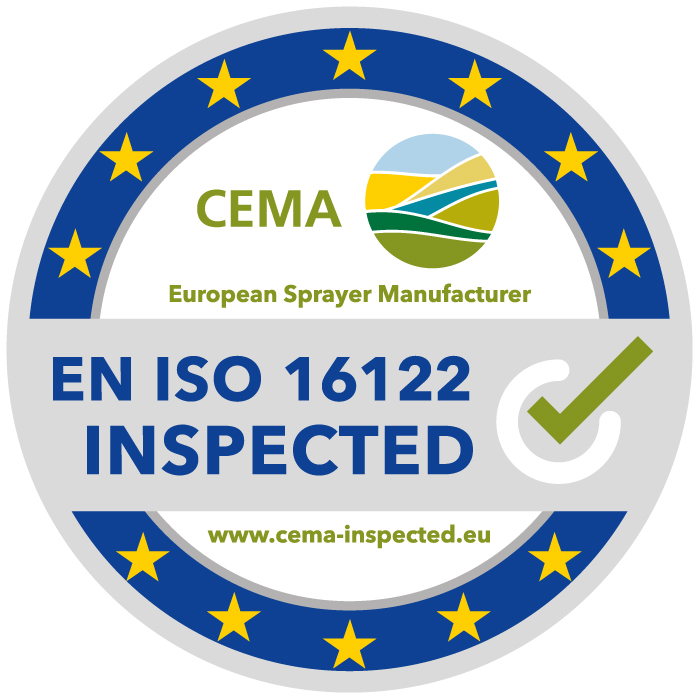Key questions & anwers to explain the use of CEMA's Sprayer Inspection Seal

1. What does the CEMA Sprayer Inspection Seal stand for?
It proves that a specific sprayer manufacturer’s tailored test protocol is followed as authorized by a local authorization body (from a Member State or region) which ensures a buyer that his machine will pass the first in-use inspection.
If a CEMA Seal is applied it is always together with the national/local seal.
It also supports mutual recognition by Member States/local authorities of this test protocol and its results. It means that the sprayer pre-use inspection done in one Member State should also be accepted in another Member State.
2. Do you always need to have such an assurance that the first in-use inspection will be made in the form of a national seal (and CEMA Seal)?
The (first) pre-inspection of individual sprayers is offered by the manufacturer as an option – it is not an obligation and it is not a legal request neither European nor national. It is up to each individual customer to decide whether or not he likes to accept and to buy this offer as an option.
3. What is the difference between the national seal only and the option that the CEMA Seal is attached as well?
With the CEMA Seal attached as well, the authorized testing body doing the inspection is the company itself. The test protocol they use is tailored to their already existing internal quality assurance checks within the production process.
The protocol is agreed by the authorization body of a Member State/region as a precondition for the authorization. The authorization body can and will make audits at the manufacturer’s production sites.
When only the national seal is attached, the national test protocol is used and it is not ensured that the seal is accepted in other countries.
With the mutual recognition, as indicated by the CEMA seal, the costs for this tests can be limited to only once for the whole EU area and therefore also reduce costs for the purchase.
4. What detailed process must be followed to be allowed to affix the CEMA Seal?
1. There is a test protocol based on the EN ISO 16122 adopted by a manufacturer. The test protocol can be specifically written for the manufacturing facility (tailored to the manufacturer depending on the level of integration of the Conformity of Production into their manufacturing processes). It is referred to as the manufacturer’s test protocol.
2. The manufacturer can choose for its authorisation as test centre an authorisation body which is located at the manufacturer’s facility place (county, province or state), or it can be an authority from one of the different EU member states.
3. The selected authority is asked to verify whether the Manufacturer’s test protocol is fulfilling the requirements of EN ISO 16122 and whether it can be agreed, with or without certain modifications, as equivalent of the test protocol from the testing authority. The authorisation as test centre is dependent on this agreement.
4. The selected authority may visit and inspect the manufacturing facility (to check items related to EN ISO 16122 only).
5. The manufacturer will conduct the testing of the sprayer according the test protocol and will be authorized to issue the testing report and place the local/national authority seal on the machine.
6. The manufacturer will pay fees related to the approval as test centre.
7. The different national schemes (authority, testing records and decals) will be kept as they are today.
8. The CEMA seal can be attached by the manufacturer as a sign that above procedures are followed and as support for the mutual recognition.







